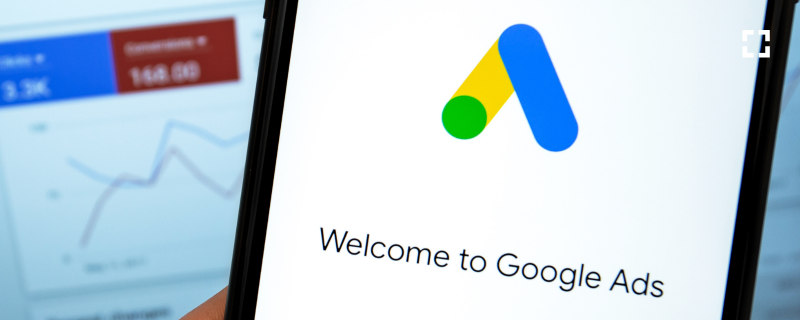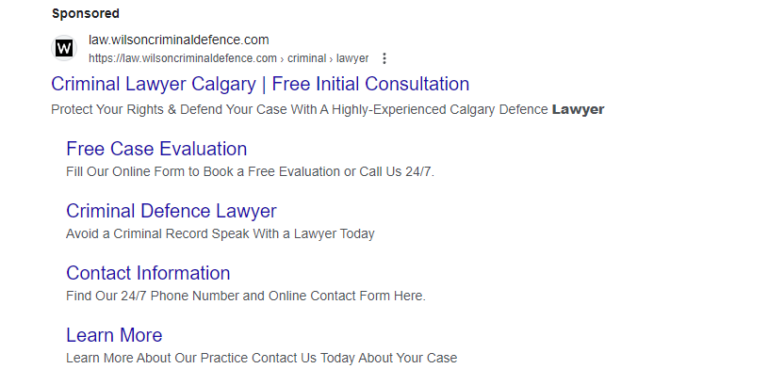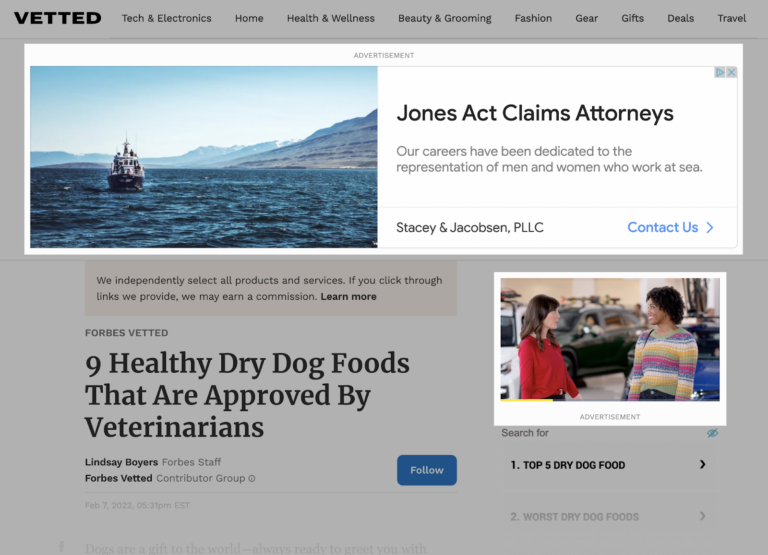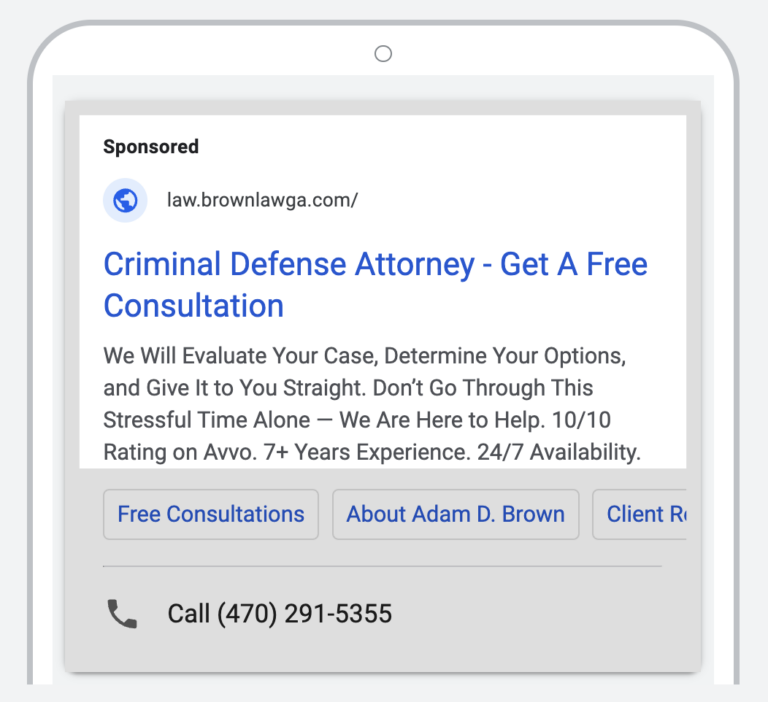
Google Ads for lawyers are powerful tools for converting searchers into prospective clients for your law firm.
Many firms understand the importance of using Google Ads to attract customers. They know that ads increasingly dominate the search results page, how paid traffic can supplement organic SEO traffic, and have heard about the impressive results other firms have achieved.
Why do they never seem to achieve these results for their own firm?
We’ll answer that question by touching on common mistakes and the most critical optimization opportunities for a law firm’s Google Ads campaign, plus give you a deep dive into one of our client’s successful Google Ads journey.
In this article, you’ll learn:
Let’s dive into the basics of Google Ads for lawyers.
Google Ads is an online advertising platform developed by Google, where advertisers bid to display their ads at the top of Google’s SERP. It operates on a pay-per-click (PPC) model, meaning you pay a fee each time someone clicks on your ad.
This allows you to “buy” traffic to your website rather than relying solely on organic search results.
For example, if you want to appear for a challenging keyword like “DUI lawyer,” where the competition is high, you can bid on that keyword. If your bid is high enough, your ad can appear on the front page of search results regardless of your organic ranking.
When someone clicks on your ad, you pay a fee.
The goal of a successful PPC campaign is to ensure that the revenue generated from these clicks exceeds the cost, resulting in a high return on investment (ROI) — easier said than done.
Google Ads can work well for many law firms. But the success of Google Ads campaigns for law firms depends on a few factors, including how well the campaigns are managed and optimized.
Google advertising can significantly impact the amount of business your firm receives — although the platform can be tricky for beginners and can become very expensive.
Even though you only pay per click, these clicks can cost hundreds of dollars, especially for legal-related search terms. In fact, a 2024 study found that the top 25 most expensive search terms on Google were all related to the legal industry.
The high cost per click is driven by the high demand from attorneys to purchase these clicks, showing that they are worthwhile. To avoid overspending, it’s essential to set up your campaigns carefully.
Done correctly, Google Ads can lead to significant profits. Done poorly, it can result in wasted money.
Whether you should invest in Google Ads depends on your law firm’s practice area, marketing budget, and goals.
Think about:
If you’re practicing in any of the following areas of law, where client referrals are less common, Google Ads are at least worth a look.
These are the practice areas I find get the best ROI from Google Ads. They usually involve personal issues that potential clients prefer to keep private, leading them to search for legal help online rather than asking for referrals.
Let’s dive into the tips.
You should understand the different cost metrics involved in managing your advertising budget before you begin setting up your Google Ads.
Managing your ad spend involves more than just terminology — you’ve got to put it into practice. Here are some tips.
By understanding these costs and implementing effective budgeting and bidding strategies, you can make sure that your Google Ads campaigns are both efficient and effective, maximizing your return on investment.
Selecting the right type of campaign can help you align your Google Ads strategy with your marketing goals.
For law firms, the two primary options are search campaigns and display network campaigns.
Search campaigns are designed to show your ads on the Google Search Network.
These ads appear when potential clients search for keywords related to your legal services. They’re perfect if your goal is to attract users who are actively looking for legal assistance. You can target specific keywords relevant to your practice area, and your ads appear when someone searches for those queries.

Use search campaigns if you want to rank for specific keywords and attract potential clients actively seeking legal help.
Display network campaigns show your ads across a vast range of websites, mobile apps, and videos within the Google Display Network. These ads are typically more visual, including images and videos, making them great for brand awareness.
Your ads can appear on millions of websites and apps, increasing your brand’s visibility. You can target audiences based on demographics, interests, and browsing behavior, which is excellent for building brand awareness and keeping your firm top-of-mind for potential clients who might not be actively searching for legal services.

Building a strong keyword list and conducting thorough keyword research are foundational steps in setting up an effective Google Ads campaign. The goal is to find keywords that are valuable to your firm — these are usually related to your practice area and location.
If you’re a family law firm in Georgia, you’d go for keywords like “family law in Georgia,” for example.
Begin by identifying the core keywords related to your legal services. Expand this list by adding synonyms, variations, and related terms. This will help you capture a broader range of search queries and attract more potential clients.
You can use free tools like the Google Ads Keyword Planner or paid tools like Semrush to discover keywords. You can start with a single keyword, and either of the tools will show related keywords and variations, plus metrics like cost-per-click and search volume.
I recommend focusing on long-tail keywords, which can lead to higher-quality leads. These keywords are more specific and face less competition, making them more cost-effective.
For example, instead of targeting a broad term like “attorney,” which is highly competitive, you can target more specific phrases such as “family law attorney free consultation.” Long-tail keywords are designed to match the search intent of users more precisely, leading to better engagement and higher conversion rates.
Not all keywords function the same way, and they are generally categorized by their match type. Understanding and utilizing these different match types can significantly impact your Google Ads results.
Keyword match types determine which Google search can trigger your ad. For example, you can use broad match to reach a wider audience or exact match to target a more specific group of potential clients.
Broad Match: This match type allows your ad to be shown for searches that include the keyword phrase, similar phrases, singular or plural forms, misspellings, synonyms, related searches, and other relevant variations.
Example:
Phrase Match: With phrase match, your ad is triggered when someone searches for terms that include your keyword phrase, along with close variations of those keywords in any order. This can include misspellings, singular and plural forms, acronyms, abbreviations, and accents.
Example:
Exact Match: Ads with exact match keywords show up for searches that exactly match the term or close variations of that term. Close variations may include a different order of words if it doesn’t change the meaning, and the addition or removal of function words like prepositions and conjunctions.
Example:
Negative Match: Negative keywords prevent your ads from showing for searches that include those terms. For example, if you are a family law firm that does not offer mediation services, you could use “-mediation” as a negative keyword to exclude your ads from searches related to mediation.
Example:
Using a mix of keyword match types allows you to balance precision and reach. Exact matches are highly relevant and typically lead to higher conversion rates but will attract fewer searches. Broad matches generate more impressions and clicks but may include a higher proportion of irrelevant traffic.
A good strategy is to organize your ad groups by match type. Use exact matches for highly targeted keywords, and broad or phrase matches when you want to capture a wider audience, especially if search volume is low for those terms.
Organizing your ad groups can help you narrow in on your targeting so your ads are shown to the right audience at the right time.
Here’s how to create and organize ad groups for optimal results.
One common mistake law firms make is grouping all their keywords and ads together in a single ad group, which results in everyone seeing the same ad regardless of what they search for. This approach misses the opportunity to tailor your ads to the specific intent behind different search queries.
Google Ads allows you to set up different ad groups for various keyword themes, which is essential for segmenting your keywords based on your audience’s intent and making campaign management more effective. By matching your ad content with the specific keywords being searched, you can significantly increase the likelihood that the right clients will click through.
For example, a criminal defense law firm like Oykhman Criminal Defence breaks down their practice area keywords into different ad groups to target their ads more precisely based on what people are searching for:
Although separating ad groups by keyword themes might seem like more work in the initial setup and ongoing management, the increased targeting accuracy and relevance more than justify the effort.
For your top-performing keywords, consider using Single Keyword Ad Groups (SKAGs).
For your top-performing keywords, consider using Single Keyword Ad Groups (SKAGs).
This approach involves creating an ad group for each individual keyword like in the example above, allowing for highly targeted ad copy and better performance tracking. Isolating individual keywords has several benefits:
For example, if a keyword like “divorce lawyer” is performing exceptionally well, creating a SKAG allows you to optimize ads and bids specifically for that term, maximizing its effectiveness.
Continuously monitor the performance of your ad groups and make adjustments as needed.
If certain keywords are not performing well, consider pausing them or adjusting your bids. Use performance metrics such as click-through rates (CTR), conversion rates, and cost per conversion to guide your optimizations.
One of the fundamental rules of Google Ads is to test everything — nowhere is this more important than in your ad copy.
This is the copy that will either convince a potential customer to click or convince them to look at a competing law firm.
So, it’s all on the line with your ad copy.
Your messaging is key here. It needs to speak to the needs and concerns of your target audience.
But don’t fall into the trap of believing that you know what people want to read in your ads and go with your gut feeling rather than cold, hard numbers. You can write the best ad in the world (in your own mind), but it’s not performing if it doesn’t boost click-through rates and lead to conversions.
Fortunately, Google provides all the tools you need to test and measure different versions of your copy to see what works best: unlike most marketing, you can access the data on what’s working and what’s not.
Here’s what you should test.
Here’s an example of version A of an ad for one of our clients.

And here’s version B.

With ad copy, you can set up A/B tests. Google will randomly display either the A or B version of the search ad. It involves testing different headlines, body text, and CTAs.
Then you can tap into the in-built reports on impressions, clicks, and conversions to see what’s working best.
You may find the results surprising when you start testing — and you may be even more surprised what a difference it makes to your conversion rates and cost per acquisition.
NOTE: A/B testing is not just for lawyers starting out in Google Ads. It needs to be an ongoing process — the most successful Google Ads campaigns utilize A/B testing on an ongoing basis.
To determine the most effective messaging, implement A/B testing by creating multiple versions of your ad copy. This process involves varying elements like headlines, body text, or CTAs to assess which combination yields the highest engagement. Regularly analyzing performance metrics allows for data-driven decisions and continuous refinement of your ads.
Ad extensions are a great way to add extra information to your ads and can help improve click-through rates.
Here are a few useful options to consider:
By creating thoughtful, well-tested ad copy and making the most of ad extensions, you can boost your Google Ads performance, driving more clicks and converting more leads into clients.
Dynamic Keyword Insertion (DKI) is a useful tool that lets you automatically insert a searcher’s exact query into your ad copy, making the ad feel more relevant to what potential clients are searching for. This can help improve click-through rates by matching your ad to the user’s search terms.
With DKI, Google will update your ad dynamically based on the keywords someone searches for, as long as those keywords are part of your campaign.
For example, if someone searches for “DUI lawyer in Los Angeles” and you’ve targeted that keyword, DKI will automatically insert the phrase into your ad, giving it a more personalized feel.
However, while DKI can save time and boost relevance, the best ads are often the ones that are written completely from scratch. Custom-written ads allow you to craft a message that speaks directly to your audience’s needs and delivers a more powerful connection. DKI is great for efficiency, but fully tailored ads typically perform better when it comes to converting clicks into clients.
Using DKI where it makes sense and reserving custom-written copy for high-priority campaigns can help you strike the perfect balance between efficiency and impact.
After you’ve successfully put some great, high-CTR ads into the world, the next step is to send them to the right place.
A well-optimized landing page is crucial to turning ad clicks into actual clients.
For the best results, you should create custom landing pages tailored to each of your ad groups. This means that when someone clicks on your ad, they land on a page that feels relevant and aligned with the keywords they searched for.
Your landing page should reflect the messaging and intent of the ad that led the user there. If someone clicked on an ad about “divorce lawyers,” the landing page should immediately make it clear that they’re in the right place by using attention-grabbing headlines that match the ad’s content.
To get the most out of your Google Ads campaigns, it’s important to customize your settings properly.
Seems pretty basic, but start by making sure your contact information (your website, phone number, and address when appropriate) are entered correctly in your Google Ads account. This way, potential clients can easily reach out, whether they want to visit your site or call you directly from the ad.
When adjusting your campaign settings, make sure they match your goals.
For example, if you’re running search ads, it’s usually best to exclude the display network so your ads don’t appear on unrelated websites or apps. The display network is better for building general brand awareness, but search ads are designed for people actively looking for legal help. This keeps your budget focused on attracting the right kind of traffic.
You’ll also want to customize settings like location targeting and ad scheduling. If you only serve certain areas, limit your ads to those locations. You can also set your ads to show at specific times of day when potential clients are more likely to be searching for your services.

“My website continues to dominate all the top website searches in my industry and my business has grown 10-fold as a result.”
Oykhman Criminal Defence
Managing your campaign timelines is an easy way to keep your ad spend in check and make sure your ads are running at the right times. Setting clear start and end dates for your campaigns helps you control how long they run and focus your budget on the periods that matter most for your firm.
For example, if you know certain months are busier, you can schedule your ads to run during those peak times. Or, if you’re promoting a special offer or event, setting a specific timeline ensures your ads are shown when they’ll have the biggest impact.
If you prefer flexibility, dynamic ad settings can help. These allow you to track performance in real time and adjust your campaign on the fly. If your ads are outperforming expectations, or need tweaking, you can shift your budget, bids, or targeting as needed.
Managing your timelines and staying on top of performance can help you get more control over your budget while optimizing for the best results.
Keeping an eye on your campaign’s performance is key to getting the best results from your Google Ads. Regularly check metrics like click-through rates, cost-per-click, and conversion rates to see where things are working and where they could be improved.
Use that data to fine-tune your approach. If certain keywords are bringing in quality clicks and conversions, it might make sense to increase your bids on those. If others aren’t performing as expected, you can lower the bids or shift your budget to more effective keywords.
Pay attention to trends and patterns over time. This will help you figure out which ads and keywords are delivering the best outcomes, so you can make smarter adjustments and get more value from your campaigns.
Managing Google Ads campaigns effectively takes time and expertise, and if you’re not getting the results you want, it might be time to bring in a professional. At JurisPage, we specialize in Google Ads management for law firms, and as the Head of PPC, I’ve seen firsthand how a well-managed campaign can transform a firm’s lead generation and profitability. With our experience and focus on the legal industry, we know how to get the most out of every ad dollar.
If you’re struggling with managing Google Ads on your own or want to maximize your ROI, working with us can help you reach those goals. And if Google Ads doesn’t seem like the right fit for your firm, we can also explore other digital marketing strategies like SEO or content marketing to boost your online visibility and bring in more clients.
Google Ads can be a game-changer for law firms aiming to attract more clients, but success hinges on thoughtful planning, optimization, and management. From crafting targeted campaigns and writing effective ad copy to building optimized landing pages, each element contributes to better results. While automated tools like Dynamic Keyword Insertion can help, the top-performing campaigns always benefit from a custom, hands-on approach.
If managing Google Ads feels like a challenge, or your results aren’t meeting expectations, professional PPC management can make all the difference.
At JurisPage, we specialize in helping law firms maximize their ad spend and drive real results. We’re here to help you get the most out of your campaigns. Get your free consultation today.
Ready to maximize your marketing budget? Fill out the contact form or call us today for a complimentary consultation. We will listen to your story, work to define your business objectives, and recommend an approach to deliver maximum ROI for your firm.
By using this website, you consent to our use of cookies in accordance with our Cookie Policy. Cookies help us enhance your browsing experience and provide personalized content. If you do not agree to our use of cookies, please adjust your browser settings accordingly.